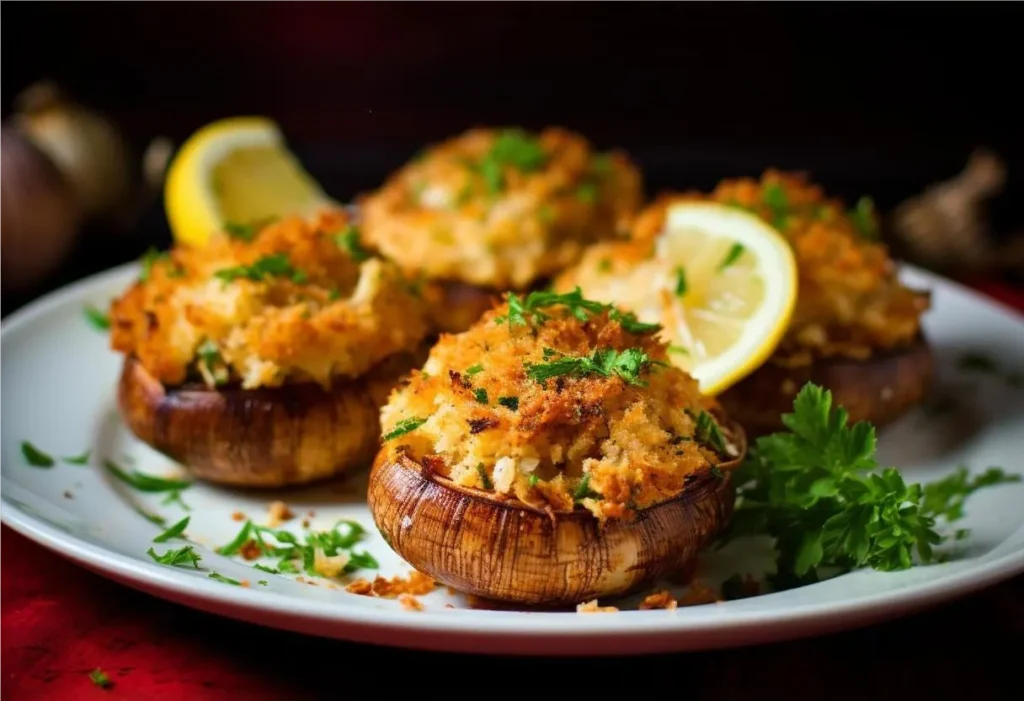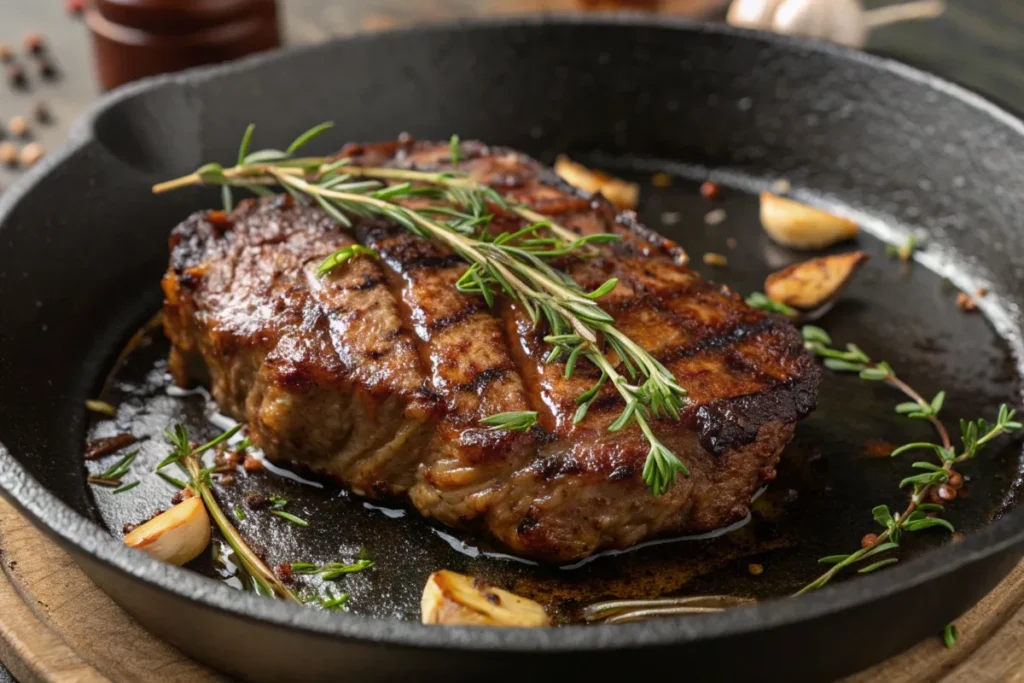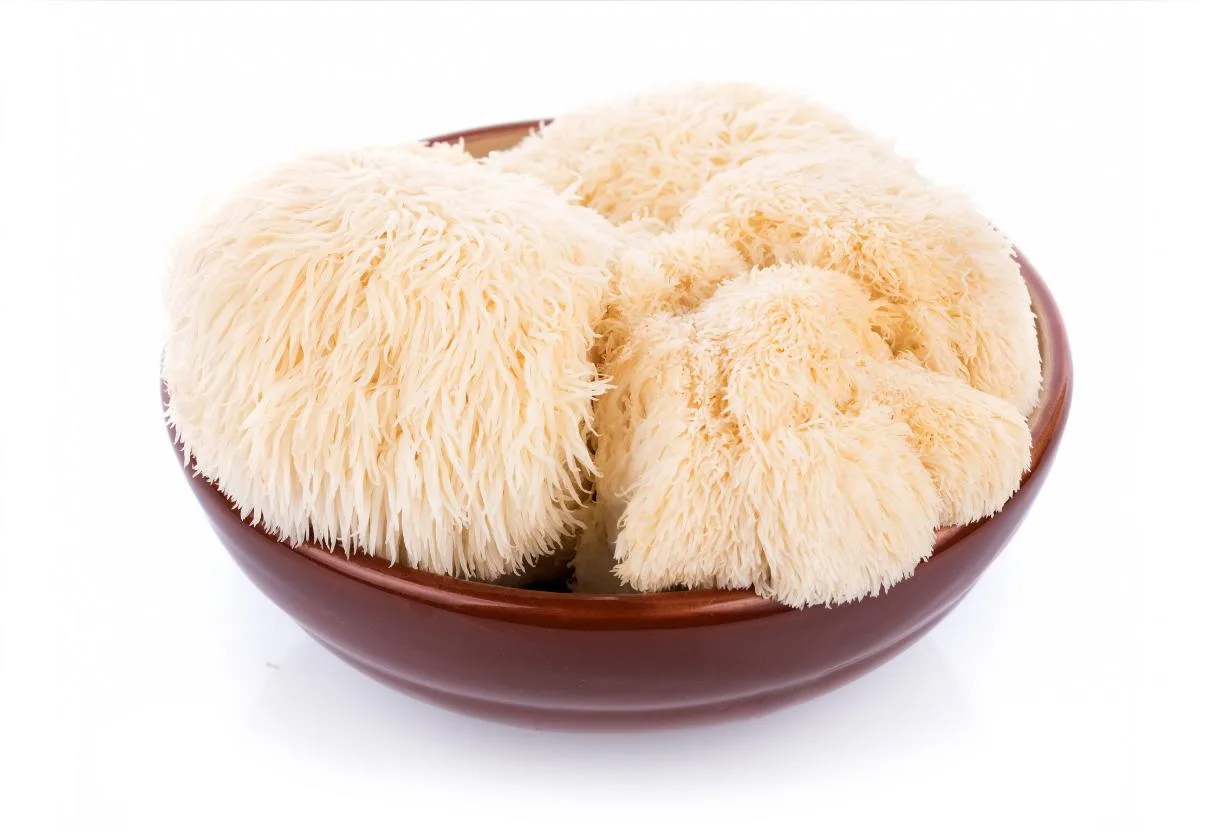Discover diverse culinary uses for Lion’s Mane mushrooms! This guide explores recipes, health benefits, and preparation tips for this unique fungi.
Have you ever encountered a mushroom that resembles a cascading white waterfall or a fluffy lion’s mane? This unique fungus, aptly named the lion’s mane mushroom, is not only visually captivating, but it also boasts a subtle, savory flavor and a texture that’s surprisingly similar to seafood. Furthermore, beyond its intriguing appearance and delicious taste, this mushroom is gaining recognition for its potential health benefits. This article will delve into the fascinating world of lion’s mane, exploring its culinary versatility through a collection of delectable recipes, while also examining the health benefits it may offer. Therefore, whether you’re a seasoned mushroom enthusiast or a curious beginner, get ready to discover the culinary magic and potential health secrets hidden within the remarkable lion’s mane.
- What is Lion's Mane Mushroom?
- The Amazing Health Benefits of Lion's Mane Mushrooms
- Preparing Lion's Mane Recipes: A Step-by-Step Guide
- Delicious Lion's Mane Mushroom Recipe Ideas
- Tips for Cooking with Lion's Mane Mushrooms
- Purchasing and Storing Lion's Mane Mushrooms
- Frequently Asked Questions (FAQs)
- Conclusion
What is Lion’s Mane Mushroom?
Lion’s mane mushroom (Hericium erinaceus), belonging to the Hericiaceae family, is a truly distinctive fungus. Unlike the typical gilled mushrooms you might be familiar with, lion’s mane features cascading, icicle-like spines that hang down from a central base. This unique characteristic makes it easy to identify in the wild, where it primarily grows on dead hardwoods, such as beech, oak, and maple trees. While naturally found in North America, Europe, and Asia, lion’s mane is also increasingly cultivated for commercial purposes, making it more accessible than ever. Additionally, the flavor profile is just as intriguing as its appearance. It has a mild, savory taste, often described as having a hint of sweetness and a seafood-like undertone, particularly when cooked. The texture, similarly, is noteworthy – tender and meaty, some even compare it to crab meat or lobster.
Appearance and Habitats
The appearance of Hericium erinaceus is quite striking. Its shaggy, white, or creamy-colored spines form a mass that can reach up to a foot in diameter. Furthermore, they hang down, resembling the mane of a lion, hence the common name. These mushrooms typically grow in a cluster on the trunks and branches of decaying hardwood trees, often in late summer and fall. In addition to its natural habitat, lion’s mane mushrooms are now widely cultivated, therefore, making them readily available at many specialty stores and online markets.
Flavor and Availability
The flavor and texture profile of lion’s mane is quite unique. As mentioned previously, it has a mild, savory taste that is often compared to seafood, particularly crab or lobster. In addition, the texture is tender, meaty, and slightly spongy, which further contributes to its appeal. You can find lion’s mane in a few different forms: fresh, dried, or in powdered/supplement form. Therefore, fresh is best for cooking purposes and can be found at farmers’ markets, specialty grocery stores, or from local mushroom foragers. Alternatively, dried or supplement forms are available online. For cooking, fresh or rehydrated dried options are best for incorporating into recipes.
The Amazing Health Benefits of Lion’s Mane Mushrooms
Lion’s mane has been garnering significant attention for its potential health benefits. While research is ongoing, several promising areas suggest this mushroom may offer a range of advantages.
Cognitive Function and Lion’s Mane
One of the most talked-about benefits is its potential impact on cognitive function. This is largely due to the presence of compounds called hericenones and erinacines, which are believed to stimulate the production of nerve growth factor (NGF). NGF is a protein crucial for the growth and maintenance of brain cells. Therefore, by supporting NGF, lion’s mane may help protect against cognitive decline, improve memory and focus, and potentially assist in treating neurological disorders. Moreover, research suggests it may play a role in neuroprotection.
Mental Health and Mood Enhancement
Furthermore, it has been suggested that lion’s mane may positively influence mental health and mood. Some studies have explored its potential in reducing symptoms of anxiety and depression, as well as its potential role in stress management. Therefore, it may be a valuable tool for enhancing emotional well-being, promoting overall mental clarity and stability.
Digestion and Gut Health Support
In addition, lion’s mane may promote digestive health. While more research is needed, some evidence suggests that it could help balance the gut microbiome and reduce inflammation, which is vital for gut health. Therefore, some researchers believe that incorporating lion’s mane into your diet can have a positive impact on your digestion and gut health. Additionally, Lion’s Mane mushrooms are being studied for their potential anti-inflammatory properties
Other Potential Benefits
Lion’s mane is also associated with immune system support. Its components have the potential to stimulate immune cells, thus providing an extra line of defense against illness. Preliminary research also indicates that lion’s mane may have positive effects on heart health by potentially reducing cholesterol levels and improving overall cardiovascular health. In addition, the mushroom’s antioxidant properties can play a role in overall health by combating harmful free radicals in the body. However, it is important to note that research is still developing, and these potential benefits are not a replacement for professional medical advice. Lion’s mane is not intended to diagnose, treat, cure, or prevent any disease. Always consult your healthcare provider before making any changes to your healthcare regimen.
Preparing Lion’s Mane Recipes: A Step-by-Step Guide
Before you dive into cooking, it’s important to properly prepare your lion’s mane mushrooms. Whether you are working with fresh or dried mushrooms, proper techniques can greatly enhance the end result.
Cleaning Fresh Lion’s Mane Mushrooms
Start by cleaning fresh mushrooms. Avoid soaking them in water, as they absorb water easily, becoming waterlogged and rubbery. Instead, gently brush off any visible dirt with a soft mushroom brush or wipe them clean with a lightly damp paper towel. Therefore, this method helps preserve their texture and prevents them from becoming soggy. If your mushrooms are very dirty, a quick rinse under cold water is okay, but be sure to dry them immediately.
Slicing and Cutting Techniques
Once clean, you can move on to slicing or chopping, depending on your recipe. For example, the way you cut the mushroom can greatly affect the final texture and cooking result. For stir-fries or soups, smaller pieces are ideal, while for “crab” cakes or “steaks,” larger slices or chunks might work better. In addition, don’t hesitate to tear the mushroom apart instead of slicing for more of a “pulled” texture.
Storage of Fresh and Dried Mushrooms
For optimal storage of fresh lion’s mane mushrooms, place them in a paper bag or loosely wrapped in paper towels and store them in the refrigerator’s crisper drawer. This will help keep them fresh for several days. For dried mushrooms, store in an airtight container in a cool, dry, and dark place. Therefore, both of these methods help preserve the quality of the mushrooms. When using dried lion’s mane, you’ll need to rehydrate them first. Simply place them in a bowl of hot water for 20-30 minutes, or until they are soft and pliable. Once rehydrated, gently squeeze out the excess water before adding them to your recipes.
Delicious Lion’s Mane Mushroom Recipe Ideas
Now, let’s explore some delicious ways to incorporate lion’s mane into your cooking repertoire.
Lion’s Mane “Crab” Cakes: A Seafood Alternative

This recipe captures the seafood-like essence of lion’s mane, creating a delicious and plant-based alternative to traditional crab cakes.
Ingredients:
- 1 pound fresh lion’s mane mushrooms, finely chopped
- ½ cup breadcrumbs (panko or gluten-free)
- ¼ cup mayonnaise (or vegan alternative)
- 2 tablespoons finely chopped red bell pepper
- 2 tablespoons finely chopped celery
- 2 cloves garlic, minced
- 1 tablespoon Dijon mustard
- 1 tablespoon lemon juice
- 1 teaspoon Old Bay seasoning (or similar seafood seasoning)
- ½ teaspoon paprika
- ¼ teaspoon salt
- ¼ teaspoon black pepper
- 2 tablespoons olive oil, for cooking
- Fresh parsley and lemon wedges, for serving
Instructions:
- In a large bowl, combine the finely chopped lion’s mane mushrooms, breadcrumbs, mayonnaise, red bell pepper, celery, minced garlic, Dijon mustard, lemon juice, Old Bay seasoning, paprika, salt, and pepper.
- Mix all the ingredients thoroughly until well combined.
- Form the mixture into small patties, about 2-3 inches in diameter.
- Heat the olive oil in a large skillet over medium heat.
- Place the patties in the skillet and cook for 3-4 minutes per side, or until golden brown and heated through.
- Serve immediately with fresh parsley and lemon wedges. A creamy remoulade sauce would also pair nicely.
Nutritional Information
Here’s an approximation of the nutritional content per 100g of cooked Lion’s Mane “Crab” Cakes. Please note, these are estimates and will vary based on specific ingredients and portion sizes:
| Nutrient | Amount per 100g |
| Calories | 180-220 |
| Protein | 8-12g |
| Fat | 10-15g |
| Carbohydrates | 12-16g |
| Fiber | 2-3g |
| Sodium | 300-400mg |
| Other nutrients | Vitamins B, D, minerals potassium, zinc |
Check out our easy old-fashioned salmon patties recipe for more inspiration.
Lion’s Mane “Steak”: A Meaty Option

This recipe highlights the meaty texture of lion’s mane, making it a satisfying plant-based main course.
- Ingredients:
- 1-2 large Lion’s Mane mushrooms (about 1 inch thick)
- 2 tablespoons olive oil
- 1 tablespoon soy sauce (or tamari for gluten-free)
- 1 teaspoon smoked paprika
- 1 teaspoon garlic powder
- ½ teaspoon dried thyme
- Salt and freshly ground black pepper, to taste
- Optional: Fresh herbs like rosemary or thyme for garnish
- Instructions:
- Gently clean the lion’s mane mushrooms and slice into thick “steak” portions if necessary.
- In a shallow dish, whisk together the olive oil, soy sauce, smoked paprika, garlic powder, thyme, salt, and pepper.
- Place the lion’s mane steaks in the marinade, ensuring they are evenly coated. Let marinate for at least 30 minutes, or up to a few hours in the refrigerator.
- Heat a skillet or grill pan over medium-high heat. Add a little more oil if needed.
- Place the marinated lion’s mane steaks in the hot pan. Sear for 4-5 minutes per side, or until golden brown and cooked through. The edges should be nicely caramelized.
- Remove from the pan and garnish with fresh herbs if desired. Serve hot with your favorite sides.
Nutritional Information
Here’s an approximation of the nutritional content per 100g of cooked Lion’s Mane “Steak” (These are estimates):
| Nutrient | Amount per 100g |
| Calories | 90-120 |
| Protein | 5-7g |
| Fat | 6-8g |
| Carbohydrates | 5-7g |
| Fiber | 1.5-2.5g |
| Sodium | 150-200mg |
| Other nutrients | Vitamins B, D, minerals potassium, zinc |
Check out our Branzino recipe for more inspiration.
Other Delicious Ways to Enjoy Lion’s Mane
- Lion’s Mane Mushroom Scramble: Sauté chopped lion’s mane mushrooms with your favorite vegetables, then whisk in 2-3 eggs per serving and cook until set. Season with salt, pepper, and any desired spices. You can also add other protein options if you don’t eat eggs.
- Lion’s Mane Mushroom Soup: Sauté diced lion’s mane mushrooms with onions, garlic, and celery. Add vegetable or chicken broth and a pinch of thyme. Simmer until the vegetables are tender, then puree until smooth. Stir in heavy cream or coconut milk. Season to taste with salt and pepper. Garnish with fresh herbs.
- Lion’s Mane Mushroom Stir-fry: Stir-fry sliced lion’s mane mushrooms with your favorite vegetables. Add a savory sauce of soy sauce, sesame oil, ginger, and garlic for a flavorful dish.
- Creative Culinary Ideas: Lion’s Mane can be added to pasta dishes, risottos, or even made into mushroom jerky.
Tips for Cooking with Lion’s Mane Mushrooms
To ensure the best results when cooking with lion’s mane, here are some helpful tips:
- Achieving the Right Texture: Avoid overcooking the mushroom, which can result in a rubbery texture. Cook it just until it’s tender and slightly browned.
- Seasoning: Lion’s mane pairs well with savory, umami-rich flavors. Garlic, herbs like thyme and rosemary, soy sauce, and smoked paprika are great additions.
- Doneness: The mushroom is cooked through when it’s tender and slightly browned, but not mushy or overly soft.
- Combining with Other Ingredients: Pair with complementary flavors like onions, garlic, herbs, bell peppers, and other vegetables.
- Working with Dried Mushrooms: Always rehydrate dried mushrooms properly and squeeze out excess water before cooking.
Purchasing and Storing Lion’s Mane Mushrooms
When purchasing lion’s mane mushrooms, it’s important to know where to look. Check farmers’ markets, specialty grocery stores, or look for reputable online retailers. Fresh mushrooms should be firm and white. If buying dried, make sure they’re from a reliable source. The best choice, fresh or dried, depends on your specific need and what’s available. Furthermore, fresh mushrooms should be used within a few days of purchase, while dried mushrooms can be stored for much longer in an airtight container in a cool, dark pantry. Always check fresh mushrooms for any signs of spoilage, such as a slimy texture or a foul smell. Discard them if they are discolored or appear to be deteriorating.
Frequently Asked Questions (FAQs)
What is the best way to eat lion’s mane?
The best way to eat lion’s mane largely depends on your personal preferences. You can enjoy it sautéed, grilled, or as a seafood substitute in dishes like crab cakes. It’s also delicious in soups, stir-fries, or as a supplement in powder form. The key is to cook it just until tender, avoiding overcooking, which can make it rubbery.
What is the downside of lion’s mane?
The downside of lion’s mane is minimal for most individuals. However, some people may experience mild digestive discomfort or allergic reactions, although these are rare. It’s also important to source mushrooms from a reputable supplier to avoid potential contamination. Therefore, always consult with a healthcare professional before making any significant dietary changes, particularly if you have underlying health conditions.
Is Lion’s Mane like Adderall?
Lion’s mane is not like Adderall, a stimulant medication used to treat ADHD. While lion’s mane may improve cognitive function and focus through its effect on NGF production, its effects are more subtle and gradual than the immediate stimulant action of Adderall. Therefore, it’s not a substitute for prescribed medication.
How does lion’s mane make you feel?
Many users report feeling more focused and clear-headed when consuming lion’s mane. Some also report a sense of calm and reduced anxiety. These effects are generally subtle and develop over time with regular use. However, individual experiences can vary, and more research is needed to fully understand the effects.
Conclusion
Lion’s mane mushrooms are a truly versatile and fascinating food. Their unique texture, subtle flavor, and potential health benefits make them a worthy addition to any diet. From delicious “crab” cakes to hearty steaks and comforting soups, there’s a wide range of ways to enjoy this remarkable fungus. Therefore, we hope that this article has not only educated you about lion’s mane mushrooms but also inspired you to experiment with new recipes and flavors. So, don’t hesitate to explore your local markets and begin your culinary journey with this wonderful ingredient.

